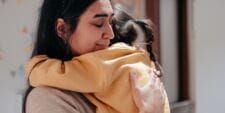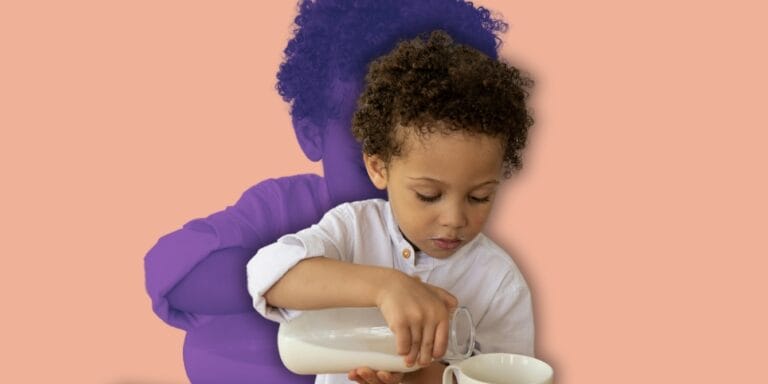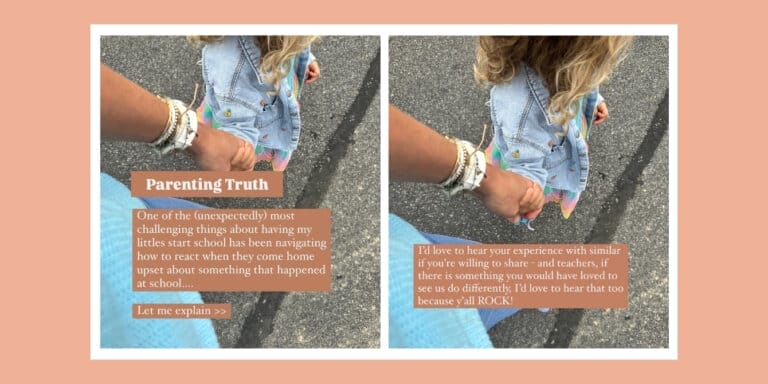How to support kids’ emotions during back-to-school season this year

More than ever, kids need social and emotional support as the school year begins.
Table of Contents
Starting a new school year can be stressful at the best of times, let alone months into a global pandemic. Parents and teachers alike have many worries regarding safety, learning loss and how children will adjust to the new normal.
It is important to note that the impact of this experience on children’s mental health will likely outweigh any potential educational gap, so when schools ultimately do return, children must be eased back into classrooms with plenty of connection, play and emotional support built into the school day.
The CDC has released recommendations for schools to reopen with guidelines on social distancing, teachers and/or students wearing masks, temperature checks, decreased recess, physical barriers and alternate schedules to reduce classroom sizes. Some parents worry that school will look more like a prison than a learning environment when their children do return, which begs the question: How will COVID-19 impact the long term mental health of young children?
Here’s how schools and parents can think about supporting children’s mental and emotional health as the school year begins during the pandemic.
While schools are crucial for teaching academics, they play an equally essential role in supporting children’s social and emotional learning (SEL). Per decades of research, it is the development of these interpersonal skills that assist our children’s brain development for a lifetime of happiness and success. It is more important than ever to recognize and value what SEL brings to children, not only in support of the stresses they may be facing currently but for the positive impact it is shown to have on children’s future health and wellbeing.
One long-time early childhood educator shares, “I can’t begin to imagine the stress and fear we will be instilling in our children in telling them they can’t get near others, play with their friends, work on projects together or eat their lunches together.” This same educator, who has worked in a public school system for over ten years where more than 90% of students qualify for the subsidized lunch program, wants the policymakers in charge of reopening to remember that a large percentage of children returning to school this fall may have been negatively impacted by COVID-19 in a number of potentially traumatic ways:
- Higher levels of parental stress and/or disrupted family routines.
- The passing of a loved one from the virus.
- Poverty due to parental job loss.
- Prolonged periods of not being able to see some family members.
- Not being able to visit playgrounds or enjoy playdates.
“The COVID-19 pandemic certainly is an unusual, unexpected event that is causing many to worry and even panic,” says Adam D. Brown, PsyD, clinical assistant professor in the Department of Child and Adolescent Psychiatry at NYU Langone and member of its Child Study Center. “Our experience can vary greatly, based on not only different levels of exposure but also on what is going on around the child. We need to look at what specific emotional and behavioral reactions might indicate traumatic stress as the current stressors are ongoing,” Dr. Brown adds.
Children’s reactions following a traumatic event will vary depending on their age, developmental level, degree of social support, and coping skills, among other factors. Some of these include:
- Unwanted thoughts or images: Children may replay certain thoughts or images in their mind or have an increase in nightmares.
- Unpleasant feelings: Some children experience an array of unpleasant feelings such as sadness, hopelessness, irritability, anger, or numbness. Others may become overwhelmed by their feelings and regress. Some may demonstrate increased anxiety or clinginess, especially when separated from a caregiver.
- Difficulty with attention: Some children may experience difficulty concentrating on schoolwork and activities, seem forgetful, or like they are daydreaming.
- Arousal and reactivity symptoms: Some children may startle more easily or feel that there is a threat present, even if there isn’t. Additionally, they may have an increase in stomachaches, headaches or other bodily complaints, or a change in appetite or sleep habits.
According to the authors of a recent study published in JAMA Pediatrics, because most mental health disorders begin in childhood, it is essential that any mental health issues be identified early and treated. Left untreated, they can lead to long-term health and emotional problems. Children are still forming their personalities and wiring their brains for life skills. To underestimate the effects of this pandemic on their developing brain would be a misstep.
It may seem counterintuitive to put a “pause” on academics, however, research indicates that SEL practices boost academic success, decrease disruptive behavior, and reduce emotional distress in the long-term. While trauma-informed practices were widely used before the pandemic, they’re likely to be even more integral as students process the effects of the past several months.
Many parents and educators agree that relationships must come before content. “If you’re not addressing the trauma, and children are distracted, checked out and falling increasingly behind, even the best curriculum won’t matter,” explained one educator. “It is important to remember that traumatic life experiences can sometimes emerge as challenging behaviors. Fear can look like aggression—flight, freeze, or fight. The trauma must be a priority.”
As parents, here are a few ways we can support the mental health of our children during this time of great uncertainty for many:
- Be emotionally and physically available for your child.
- Encourage your child to share their feelings and thoughts.
- Acknowledge and validate their concerns.
- Respect your child’s fears whether they seem “rational” or not.
- Maintain sleeping, eating, and general family household routines.
- Facilitate age-appropriate opportunities for children to make choices, giving them a sense of safety and control.
Our children may be overwhelmed with the closing of schools, social distancing, wearing masks and the changes homes and schools have experienced due to COVID-19. But one thing is clear; we must acknowledge the underlying trauma. Traumatic experiences can impact learning, behavior, and relationships at home and at school. For our children to reach their academic potential, we must first see the whole child, hold space for feeling and healing and give them the time and opportunity to practice these all-important social and emotional skills that will serve them well for a lifetime.
This post was originally published on GenMindful


































